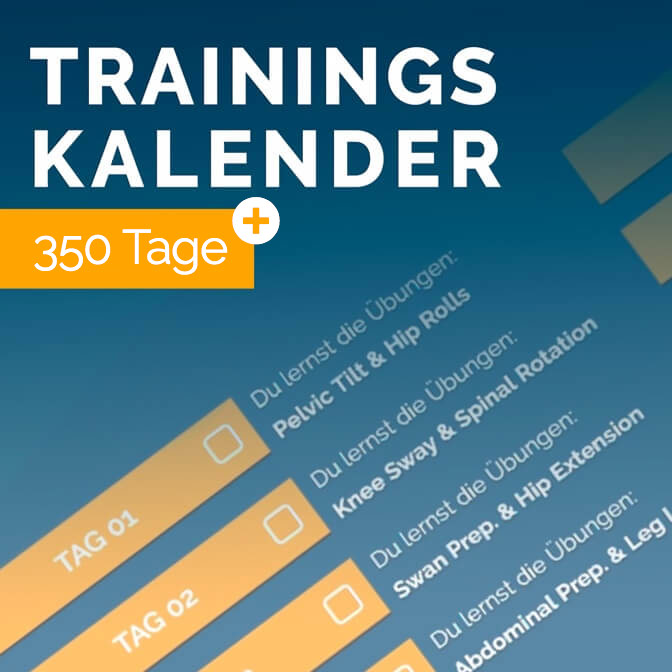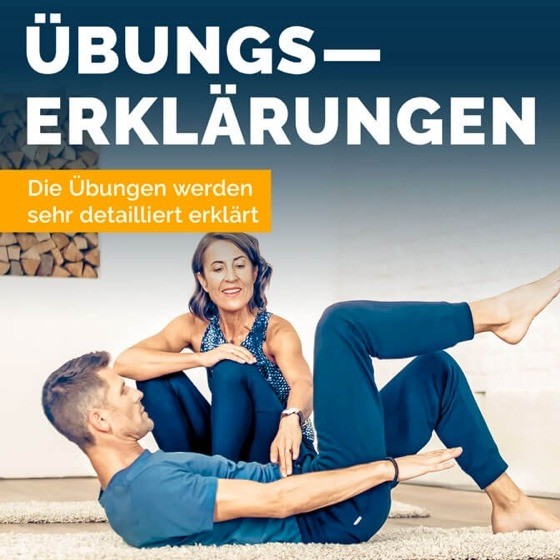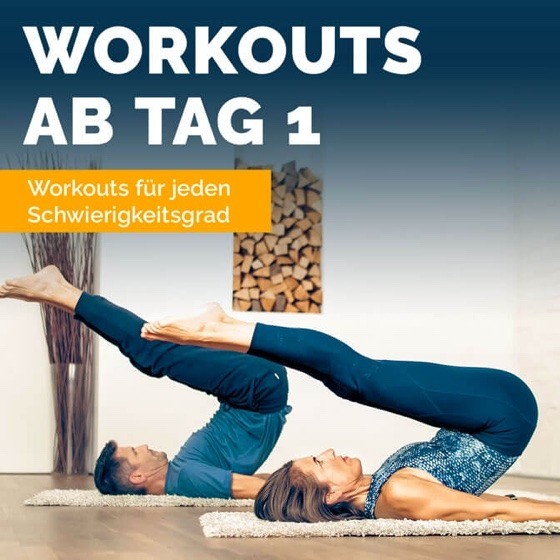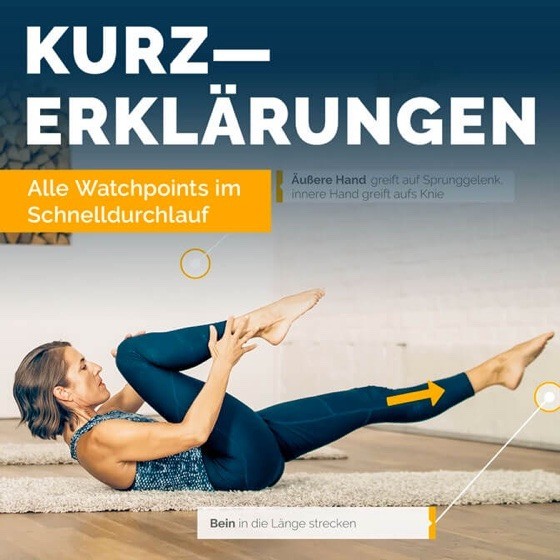
Pilates exercise of the month
Hip Rolls
June 01, 2022, by Maria Felsner
Hip Rolls is one of the most popular Pilates exercises of your spine. Yes, I'm talking from the spine's point of view here. Because if it could talk to you, it would ask you to do this exercise every day.
Why she would prefer to be rewarded with this exercise every day is due on the one hand to her very complex anatomy. On the other hand, it is also because we move less and less due to our living conditions and are also often limited by pain.
Anatomy of the spine
What makes the anatomy of the spine so complex?
The vertebral chain consists of 24 segments of vertebral bodies.
All vertebral bodies (except the sacrum and coccyx and the upper cervical vertebrae Atlas and Axis) are connected by joints. Between the vertebrae are the intervertebral discs. These provide supple guidance between the individual segments.
In addition, the vertebral bodies are held in motion by ligaments. At the same time, the ligaments in turn fix the intervertebral discs so that prolapse (herniated disc) does not occur.
And last but not least, the lateral transverse processes of the vertebral bodies are where the muscles and fascial structures attach, which in turn move the spine.
Conclusion: All these structures live from movement. Without movement, the intervertebral discs are not sufficiently supplied, the ligaments become stiff, the muscles decrease and the fasciae stick together.
Exercise goals
The goals of the Hip Rolls exercise are:
- To release blockages and tensions,
- To compensate for asymmetries,
- Strengthen muscle chains along the spine and in the leg and hip area,
- Reduce stress,
- make the vortex chain more resilient for everyday life.
To achieve these goals, however, attention to detail is necessary. This begins with the correct alignment of the head, shoulder girdle, pelvis, legs and, of course, the vertebral chain.

"If your spine is immobile and stiff at 30, you are old. If it's perfectly flexible at 60, you're young."
JOSEPH PILATES
Alignment
We practice the Hip Rolls lying down. The feet are hip width apart.
The head rests in such a way that the neck feels free and the gaze can be directed slightly forward towards the upraised knees.
Attention: Do not place a cushion under the head, as this can lead to hyperextension of the cervical spine.
Tip: Since in the beginning the leg axes usually shift during the movement, it is recommended to hold a towel or a yoga block with the legs at knee level.
Movement
Inhale. Via a conscious inhalation more space is created in the body. At the same time we prepare ourselves for the movement.
Exhaling, we gently squeeze the object between the legs and begin to roll up the spine away from the tailbone to the shoulder blades. The posterior chain of leg and back muscles supports you here.
In the inhalation we hold the position.
In the exhalation we let the vertebral chain roll again segment by segment. Here we can imagine how this chain, enveloped by the "hammock", can let go and at the same time be supported by the anterior abdominal muscles.
In the inhalation, the vertebral chain is back in its natural curvature.
Repeat the exercise several times.
By paying attention to the breathing, we subsequently train the Body awareness.
Once you can perceive the body in motion, the quality of the exercise increases.
You will immediately feel your vertebral chain becoming more supple and at the same time your leg muscles are being worked.

Pro Tip from Maria - How to avoid mistakes
- Keep your gaze slightly forward and never backward toward your forehead. This prevents overstretching of the cervical spine.
- Pay attention to your leg position and the pressure of the soles of your feet. This should be even on both the outside and inside of the foot. If you have difficulty maintaining your leg axes, continue practicing with the towel or block between your legs.
- Attempts to Articulation of the spine to adapt to the breathing. This makes the movement slower and more conscious.
- Keep mobilizing your jaw to relieve possible tension in the temporomandibular joint.
What are the benefits of just this therapeutic Pilates exercise for everyday life?
As mentioned at the beginning, we spend most of our time sitting or standing. This puts a lot of strain on the spine. Muscle and Fascia chains shorten and thus impair optimal posture.
One-sided sports such as golf, tennis or squash can also lead to asymmetries.
Thanks to this Pilates With practice, you become aware of these asymmetries. You automatically begin to correct yourself in the movement.
Also, certain postural patterns release because your spine is signaling to you that it is becoming more resilient for everyday life just through this exercise.
Be aware of your posture and always look for symmetry and balance.
Try the exercise Hip Rolls best NOW off! You will not lose anything, you will gain more quality of life!
More articles on the topic
Detailed exercise explanation with video:
Pilates exercise Hip Rolls explained
Articulation of the spine: what does it mean? And what does it bring?





